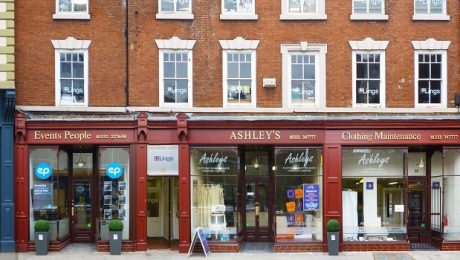How can High Streets Help Our Heritage?
In 2019, heritage focused High Street Improvement schemes gained unprecedented momentum. New projects aiming to regenerate the historic, architectural, social and economic values of the High Street have been introduced in the wake of the incredibly successful Historic England Partnership Schemes in Conservation Areas and Heritage Action Zones in addition to the National Lottery Heritage Fund Townscape Heritage Initiatives. New initiatives include the Government’s Future High Streets Fund and Historic England’s targeted High Streets Heritage Action Zones.
Why Are High Streets Important?
High Streets, like historic marketplaces or town squares, are the centre of community activities and shared experiences that form the local identity and character as well as contributing to our national heritage. However, High Streets are facing multiple challenges in our current economic climate, resulting in decreased footfall, occupancy rates and aesthetic qualities – which in turn has had undeniably detrimental impacts on the historic environment.
How Can Heritage-Led Schemes Help?
Heritage focused High Street Regeneration schemes aim to deliver long term, sustainable improvements to the historic environment as well as supporting community and economic regeneration. This is largely achieved by connecting and restoring the two qualities that sustain community identities – the heritage of their local area and the centres of social activity.
How Can Your High Street Benefit?
Local Authorities can apply for funding via the Historic England, National Lottery Heritage Fund or Future High Streets Fund application process. Each individual project needs to evidence clear objectives for how the local historic character will be restored and enhanced through the scheme, and the benefits that this will have in terms of sustainable social, economic and cultural elements of your area.
How Can Heritage Consultants and Conservation Architects Help?
If you are interested in applying for funding but are not sure which scheme is best for the requirements of your High Streets, if your town/city is eligible or even the best way to prepare an application, a Heritage Consultant and Conservation Architect can provide you with invaluable advice to guide you through the application process.
If you have applied for funding but were unsuccessful, a Heritage Consultant and Conservation Architect can review your application and identify any elements that can be improved. Then, they could work with you to re-apply or identify other opportunities that are more appropriate to your needs.
If you have been successful in your funding application and need help or advice on how to deliver the next stages of your project, a Heritage Consultant and Conservation Architect could provide expert consultation, Project Management services, Heritage Statements and Appraisals, Listed Building or planning application assistance and general advisory services to ensure the success of your scheme.
Why We Enjoy High Street Improvement Schemes
Anarchitecture is the leading expert on heritage-led High Street Regeneration mainly because we fundamentally enjoy working together as a team on every aspect of the assessment, design and delivery stages of each scheme. Every High Street is different because it reflects the character of the historic and current communities that it serves. Due to this, each High Street Improvement scheme allows our team the opportunity to investigate the history, architecture and sociality of a particular place to really understand the needs of the historic environment and community.
- Published in Heritage, Heritage Consultancy, Historic Building, Posts
Commercial Trends in Heritage Interior Design
Pubs, bars and restaurants all hold historical connotations involving generations of people coming together to drink and eat. With period interior design becoming seemingly more popular in these commercial spaces, a tangible link has been created to these past shared experiences. In particular, I have noticed a rise in Mid-Century, Art Deco, Georgian and Regency design styles replacing the paired-back interiors popularised by coffee shops in the last few years. A brilliant example of this emerging trend is the Cosy Club, a chain of restaurants who brand themselves as ‘opulent and slightly dotty’. Each of the restaurants has an individually designed, uniquely quirky and historically informed interior – skillfully used to divide the space into clearly defined zones. The recently opened Cosy Club in Nottingham is an exceptional display of their expertise in heritage interior design.
I think period interior design is popular at the moment because it reflects the rich variety of historical architecture which we are blessed with in the UK. Our city centres are often full of beautiful historical buildings which lend themselves perfectly to heritage interior design – creating visual and thematic links between extra- and intramural spaces. This can be expanded by mixing different period styles and adding sensitive modern touches to create a more playful opulence.
Most importantly, heritage interior design is significant in its ability to allow people to enjoy reconnecting with their history. Because of this, I would encourage more commercial spaces to try historically informed designs as places like the Cosy Club have done, and to encapsulate the theatre of heritage and play with different periods in history to create an immersive experience.
- Published in Heritage, Heritage Consultancy, Heritage Interior Design, Uncategorized



